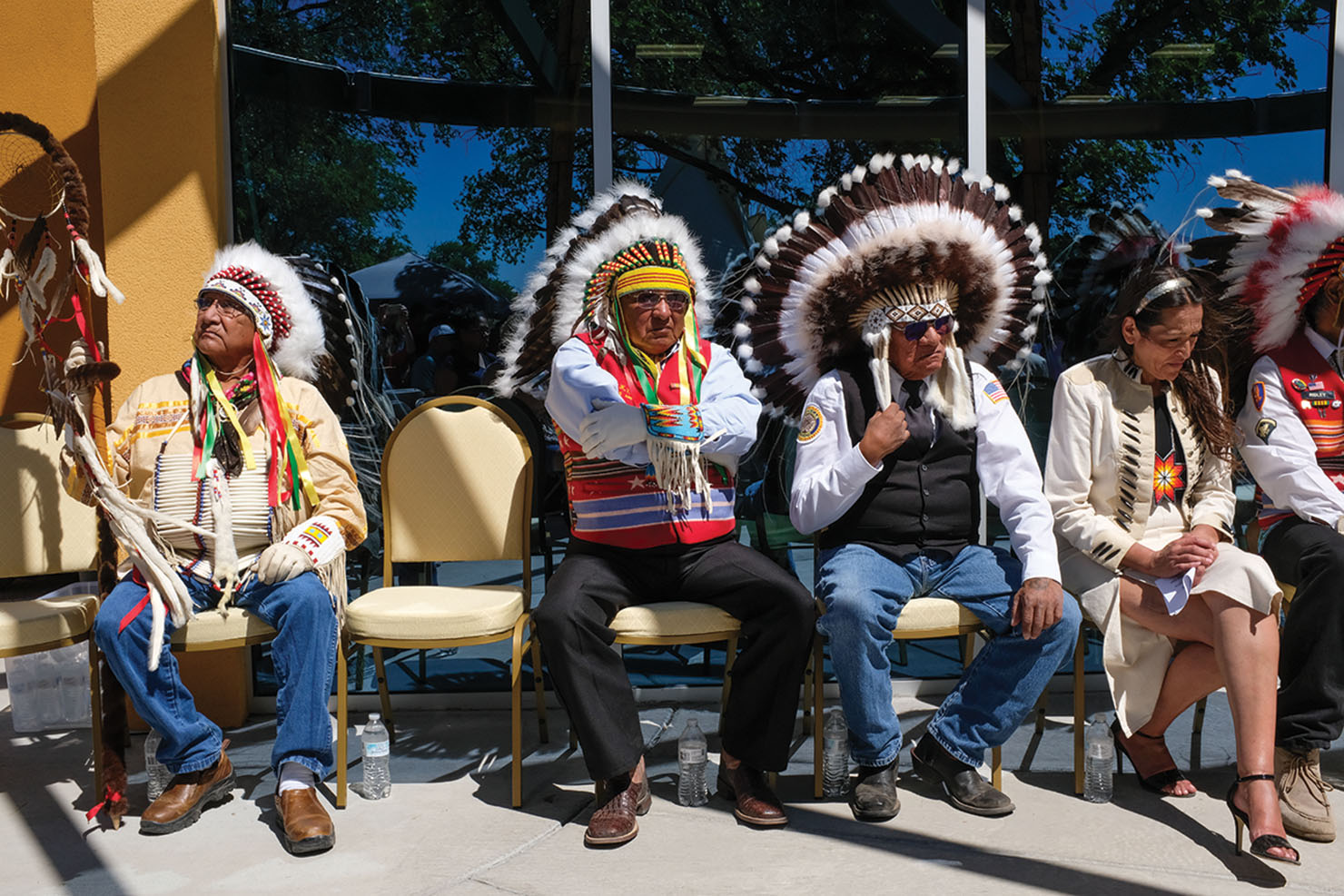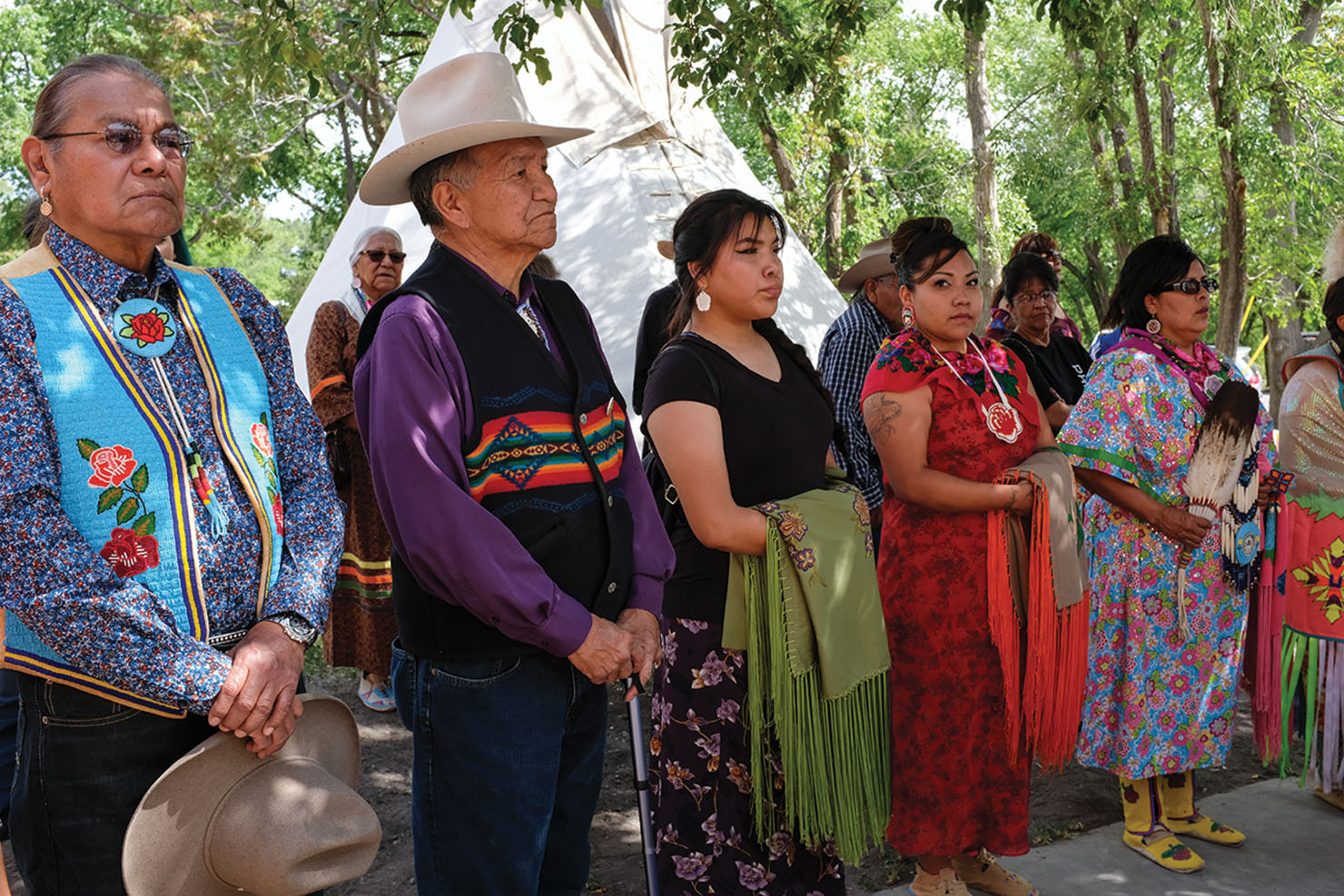Ute Indian Museum reenvisioned









The Ute Indian Museum in Montrose, Colo. opened it’s doors to members of the Ute tribes on Friday, June 9, followed by an official grand reopening on Saturday, June 10 for the general public. Dignitaries from the three Ute tribes and the State of Colorado were present for the much anticipated unveiling of the newly redesigned museum celebrating Colorado’s longest continues residents — the Utes.
“It’s been an honor, I’m so looking forward to opening this up to our Ute people,” Ernest House Jr., Executive Director of the Colorado Commission of Indian Affairs said. “I send my appreciation to History Colorado, they wanted to have a history that didn’t stop, they wanted it to go to the present — thank you — to’ak”
“We’ve always been here, we didn’t find Colorado — Colorado found us,” said House, who has been in collaboration with History Colorado and the design team from the beginning.
“We have a lot of history, Utes have a lot of history,” Southern Ute elder Alden Naranjo said. “Be proud of who you are, be a Ute everyday — not just today.”
The museum, originally built in 1956, underwent an expansion in 1998. The most current redesign sets out to achieve much more. Bringing the architecture to a more contemporary level, while also incorporating traditional design aspects of the Ute people. “We collaborated, it took a lot, I’m really happy to have been a part of that,” Southern Ute NAGPRA coordinator Cassandra Naranjo said. The redesign also increases the museum’s physical space, adding a gift shop and patio. Most importantly, the remodeled exhibit space will have a greater focus on contemporary Ute culture, tying history together with the present.
I hope this museum tells our story, depicts our way of life,” Northern Ute Chairman Luke Duncan said. “This land is Indian land, our people are buried here, it’s spiritual land.”
Manual Heart, former Chairman of the Ute Mountain Ute Tribe, gave his welcome address in the Ute language. “This building is here to tell people who we are and where we come from,” Heart said. The former chairman also mentioned that he is still interested in a formal apology from the State of Colorado for pushing the Utes out of their ancestral lands and into Utah.
“If you want to learn more about the Ute Tribes, Ute nation, then you’ve come to the right place this morning,” Southern Ute Chairman Clement Frost said prior to the ribbon cutting ceremony.
“Museums are agents of change and education,” Colorado Lt. Gov. Donna Lynne said, “[The Utes] represent what resiliency means in the face of adversity.”
Each afternoon was filled with Bear Dance songs and an accompanying cultural presentation in the museum’s courtyard. Bison meat was generously donated by the Southern Ute Tribe and prepared for the buffalo feast each day as part of the opening ceremonies.
Betsy Chapoose, Northern Ute Cultural Rights and Protection Director, emphasized that the museum exhibits are ongoing, and will continue to honor and reflect Ute history and culture through collaboration.
“Share your stories,” urged Betsy Chapoose, “so that we can build this into a house of knowledge.”









